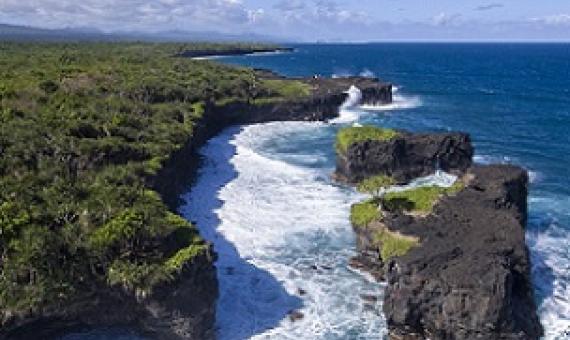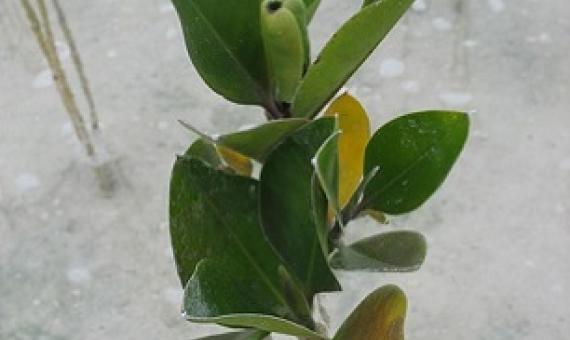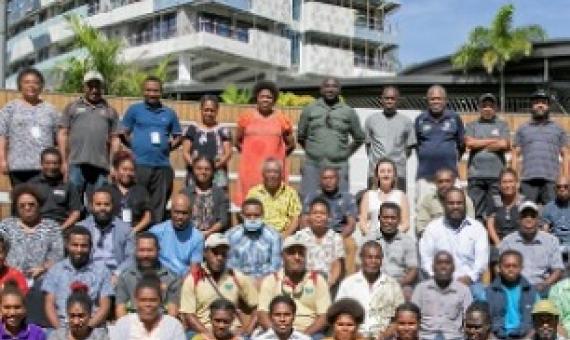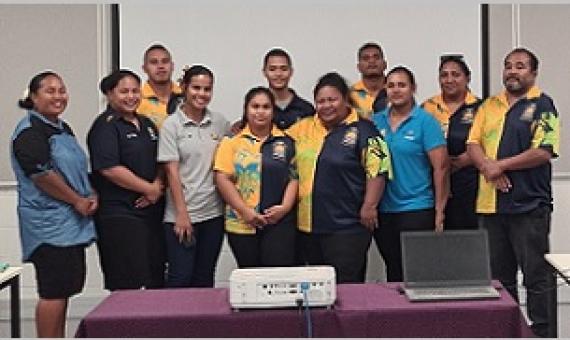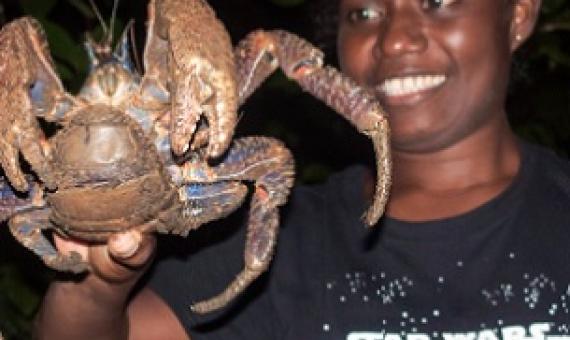The training for the S.C.S. staff and members was run by the International Union for Conservation of Nature (IUCN Oceania). S.C.S. President James Atherton said the O le Pupu Puʿe is the oldest national park in Samoa.
Pacific island countries, including PNG, took part in a blue carbon training which the Australian Government provided last month in Australia.
A national training for government officers across the environment and fisheries sectors as well as non-government organisations co-organised and implemented by the Secretariat of the Pacific Regional Environment Programme (SPREP) and the Samoa Ministry of Natural Resources and Environment (MNRE)
Key Conservation stakeholders in Papua New Guinea will benefit from training to strengthen sustainable financing skills to reduce funding gaps facing the country's protected areas network...the intensive training sessions, delivered by UNDP in partnership with the government's conservation and en
Government stakeholders of the Republic of Nauru are now equipped with hands-on, practical knowledge of finding relevant up-to-date data, information resources and technical guidance to assist planning for protected and conserved area establishment and management...It follows a virtual training o
A five day intensive tour guide training was conducted for locals at Tetepare Island, Western Province recently. The training was led by Bjorn Svensson – a tourism technical advisor.
Sustainable Development Goal 13 - Climate Action
Take urgent action to combat climate change and its impacts : Climate change is a critical development challenge for the region. The key threats are sea level rise, saltwater intrusion of freshwater lenses and ocean acidification and their impact on people, water and food security, livelihoods, and the Pacific region’s biodiversity and culture. Climate induced mobility and migration across the region may be a required adaptation strategy; Goal 13 indicators still require development for effective monitoring to take place.
Sustainable Development Goal 14 - Life Below Water
Conserve and sustainably use the oceans, seas and marine resources for sustainable development : The Blue Pacific continent contains and supports the most extensive and diverse coral reefs in the world, the largest tuna fishery, the deepest oceanic trenches and the healthiest and in some cases, largest remaining populations of many globally threatened species such as whales and dolphins, sea turtles, dugongs, sharks and stingrays; Goal 14 will monitor regional efforts in integrated and sustainable ocean management and conservation, adaptation, mitigation and biodiversity activities.
Sustainable Development Goal 15 - Life on Land
Protect, restore and promote sustainable use of terrestrial ecosystems, sustainably manage forests, combat desertification, and halt and reverse land degradation and halt biodiversity loss : Most countries in the region retain sizeable sections of forested area, although habitat loss continues to be a risk due to unsustainable logging practices and forest conversion for plantation and agricultural uses. Invasive species are the leading cause of species extinction on island ecosystems and can impact food and economic security.
Open Source GIS Training for Improved Protected Area Planning and Management in Vanuatu
Dataset contains training material on using open source Geographic Information Systems (GIS) to improve protected area planning and management from a workshop that was conducted on February 26-28, 2020. Specifically, the dataset contains lectures on GIS fundamentals, QGIS 3.x, and global positioning system (GPS), as well as country-specific datasets and a workbook containing exercises for viewing data, editing/creating datasets, and creating map products in QGIS.
